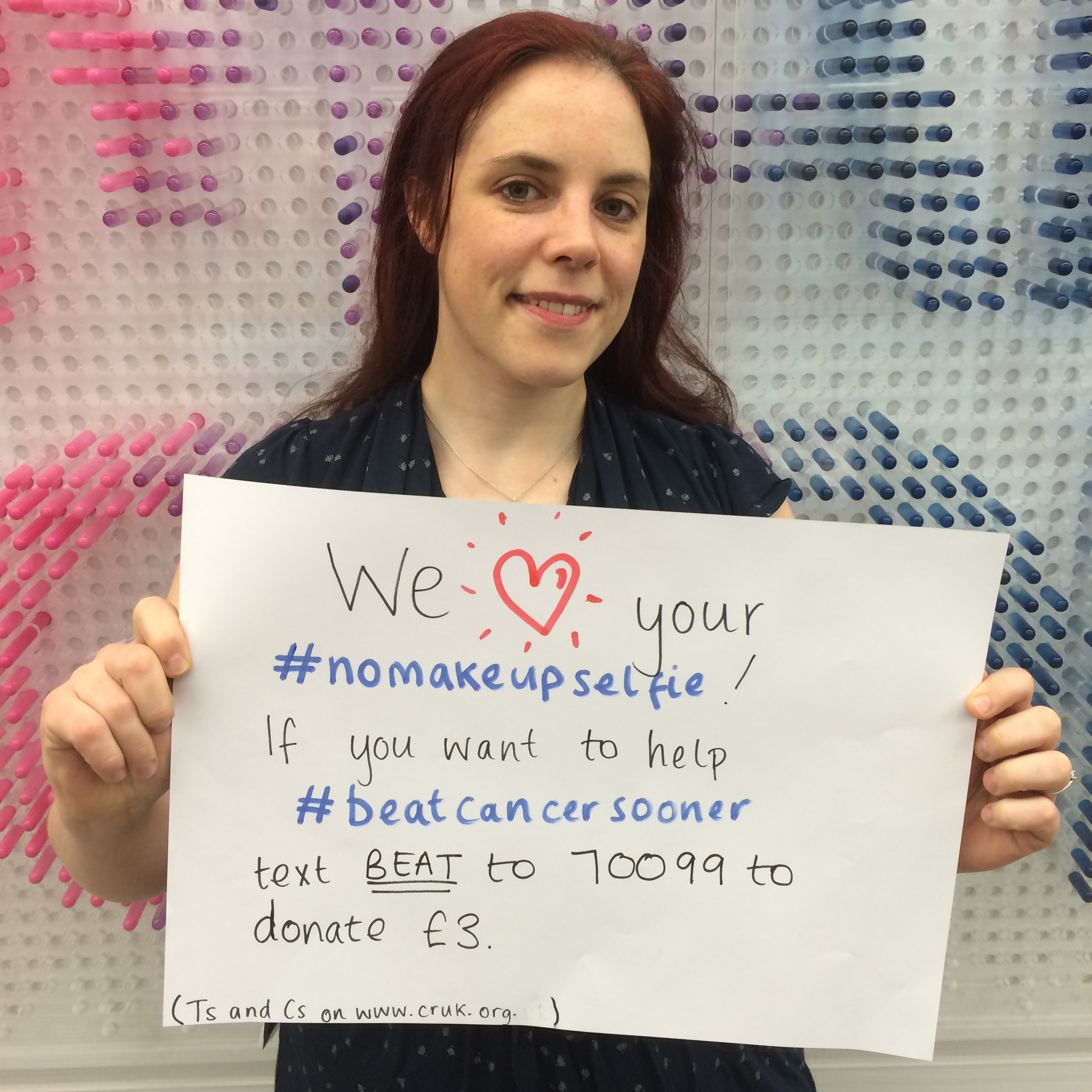How 'no makeup selfies' could impact you

In the United Kingdom, the photos have flooded Facebook, Twitter and Instagram this week. Woman after woman has taken a shot of herself barefaced, posted it, nominated some girlfriends to do the same, then texted a number to trigger a donation. The hashtag: #nomakeupselfies. And within six days it made Cancer Research UK $13 million.
And here's the bit that is scaring the bejeezus out of charity professionals: there were no strategy meetings, no branding sign-offs, no celebrity endorsement, no media planning and no audience research statistics: in fact, this great revolution in fundraising had no professionals involved at all.
More than two million women just did it all by themselves, with the phenomenon spreading to the United States, Australia, New Zealand and South Africa. And it has gotten fundraising professionals to consider upending their traditionally top-down strategies that are belabored for months in favor of more responsive ones that piggyback on existing trends.

"This is communication's zeitgeist moment," says the Founder of the Futerra comms agency, Solitaire Townsend.
"People have been trying for generations to create a runaway campaign like this. Our clients would gag for this kind of impact, but it goes against all the rules."
Her teams pride themselves on successful engagement through social media, but now they're questioning the basics. "This changes everything," she says.
It's hard to pin down the exact start of #nomakeupselfies, but the best guess is a March 5 tweet by author Laura Lippman, who posted "no make up, kind lighting," but made no mention of charity. Flip forward to 10:30pm on March 18 and Cancer Research UK's out-of-hours senior social media manager Aaron Eccles started spotting the #nomakeupselfies tag and women claiming they were doing it for his charity. By the morning there were tens of thousands and he started calling around other groups to see who was behind the movement. Answer: no one.
"It was a massive moment. A game-changer. We didn't ask the public to donate, they asked us. We didn't try and control it, we just gave them the tools to do it."
Eccles set up a number where donors could send a text message to trigger a contribution charged to the owner's cell phone bill -- bypassing websites and registration processes. Donors could take their photo, upload it and donate using just their cell, and in less than a minute.
"Clever," says Rachel Collinson who advises charities on how to attract more donors and increase their incomes and calls herself "The Supporter Whisperer."
One of the last campaigns she worked on was "Save Santa's Home" for the environmental charity Greenpeace. She lists the professionals involved in the four months preceding launch: three fundraisers, five in mobilization, three on the press team, a digital campaigner, a project manager, and another ten in a communications agency including a branding team. There was a new website, two videos for Youtube, and a seed campaign on Facebook, Twitter and email to introduce the idea.
The measurable result: around a million signatures on a petition.
"Up till now there has been a culture of one big idea. Throw enough money and enough professionals at it, and it will take off. This moment has been coming, and now there will be a big culture change. Organizations which shift from being initiators to being supporters will be the winners. We need to be humble, listen well to where our members want to go, and follow," she says.
So what does that mean for the industry? Rachel Collinson says teams will look very different in a year's time. Possibly smaller, definitely more agile. Cutting down the layers of sign-off so that they can react quickly to trends taking off. Hours instead of months. Less planning and clever strategy, and more response and picking up on trends.
But so many web innovations -- web firsts -- have been hailed as game changers. Is this really more than a fad?
In the last few days, a number of spin-offs have taken off but fizzled: #manupmakeup where men take selfies wearing lipstick, and #cockinasock where men … well, I'm sure you can work it out. Both were in aid of cancer charities, but neither are flying in the same way.
Online charity donations in the U.K. went up by 40 percent last year, cell phone donations doubled. But they still only account for 9 percent of the total money raised. And millennials are still only half as likely to give as Boomers, who respond best to old-fashioned telethons. And despite efforts to increase the level of donations, as a nation Britain only gives 1.1 percent of its GDP. That's still the highest in Europe with its high levels of state-funded social care, but only half of what is donated in the U.S., where giving is still seen more as a duty.
Hannah Terrey, head of policy and campaigns at the industry group Charities Aid Foundation, says, "We can't just focus on social media. We can't forget who the core of our donors are. It would be premature to give up the established ways of talking to them, of fund-raising. We need different strategies for different groups."
But for Townsend, it's about looking to the future.
"We have to be brave," she says. "To have this kind of impact, we can't 'own' a campaign, we can't control it. It is such a media-savvy population now. People don't like to think they're being manipulated, especially on social media. We have to hand [our campaigns] over to the consumer and accept that they may take them another way. It goes against everything we thought we knew, but it's the only way."
Sign up for our weekly newsletter featuring in-depth business innovation stories by correspondents around the globe, top domestic reporters and thought-provoking opinion columnists.
This post was originally published on Smartplanet.com